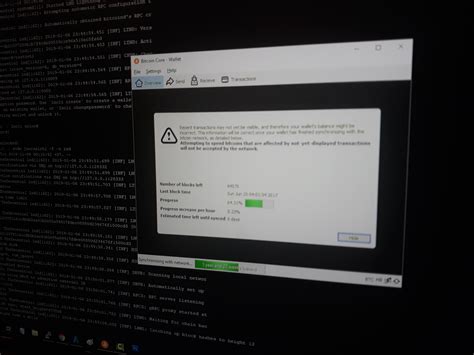بلاگ
Ethereum: Seed for bitcoin-core qt
Ethereum: A Decentralized Cryptocurrency With a Secure Twist
As a Bitcoin Core-Qt user, you are already familiar with the security features associated with it. However, one aspect that may not be immediately obvious is the ability to encrypt your wallet data. In this article, we will explore how to take advantage of Ethereum’s decentralized nature and secure your Bitcoin Core-Qt wallet.
Why Encrypt Your Wallet?
Before we dive into the implementation, let’s quickly discuss why Bitcoin Core-Qt wallet encryption is a good idea. Since you are using a private key derived from your seed phrase, storing it unencrypted on your computer can pose risks:
- Private Key Compromise – If your computer is hacked or compromised, someone can access your private keys and steal them.
- Wallet Theft
– Your Bitcoin Core-Qt wallet can be stolen, allowing unauthorized third parties to spend funds without your permission.
Using Electrum for Encryption
A popular solution for encrypting Bitcoin Core -Qt wallet data is to use the Electrum wallet. Electrum provides a secure and easy-to-use interface for managing your private key and transactions.
Here’s how you can install and configure Electrum on your Linux system:
- Download Electrum: Visit the official Electrum website ([www electrum.org]( electrum.org)) and download the latest version for Linux.
- Install Electrum: Run the installation script using the
sudo apt-get install electrumcommand (if you’re using Ubuntu-based systems).
- Create a New Wallet: Launch Electrum, click “File” > “New Wallet” and follow the instructions to create a new private key.
Once you’ve created your Electrum wallet, you’ll need to add it as an alias to your Bitcoin Core -Qt configuration file. Here’s how:
- Edit Bitcoin Core -Qt configuration file: Open
~/.bitcoincore/config(or$HOME/.bitcoincore/configon some systems).
- Add Electrum wallet: Add the following line to the end of the file:
[wallet]
alias = /path/to/electrum/wallet
Replace /path/to/electrum/wallet with the actual path to your Electrum wallet directory.
Encrypting your private key
To encrypt your private key, you’ll need to use a secure method. One option is to store it in a separate encrypted file using a tool like OpenSSL.
- Generate an RSA key pair: Run
openssl genrsa -out /path/to/private/key 2048(replace/path/to/private/keywith the desired location).
- Add your private key to Electrum: Make sure Electrum is set up and running as before.
- Encrypt your private key: Using OpenSSL, encrypt your private key with a passphrase:
openssl rsa -in /path/to/private/key -out /path/to/encrypted-private-key
Replace /path/to/private/key with the actual path to your private key and /path/to/encrypted-private-key with the desired location.
Best Practices
To ensure the security of your Bitcoin Core -Qt wallet:
- Use a strong password – Use a strong and unique password when creating your Electrum wallet or encrypting your private key.
- Keep your Electrum wallet separate

– Store your Electrum wallet in a safe place, separate from the Bitcoin Core -Qt configuration file.
- Regularly backup your data – Keep backups of your Bitcoin Core -Qt wallet and related files to prevent data loss.
By following these steps and best practices, you can take advantage of Ethereum’s decentralized nature to protect your Bitcoin Core -Qt wallet and enjoy more secure digital asset storage.
